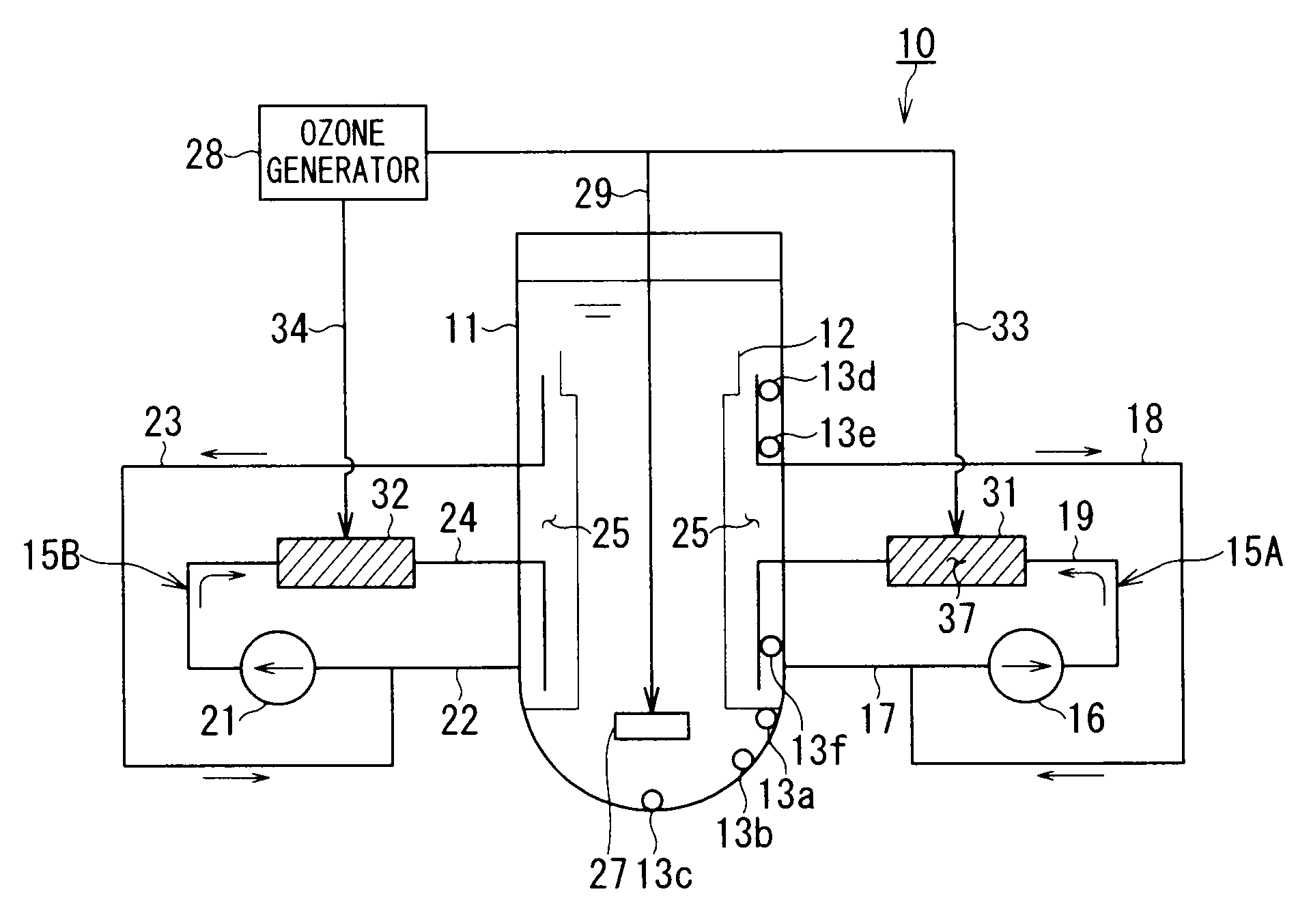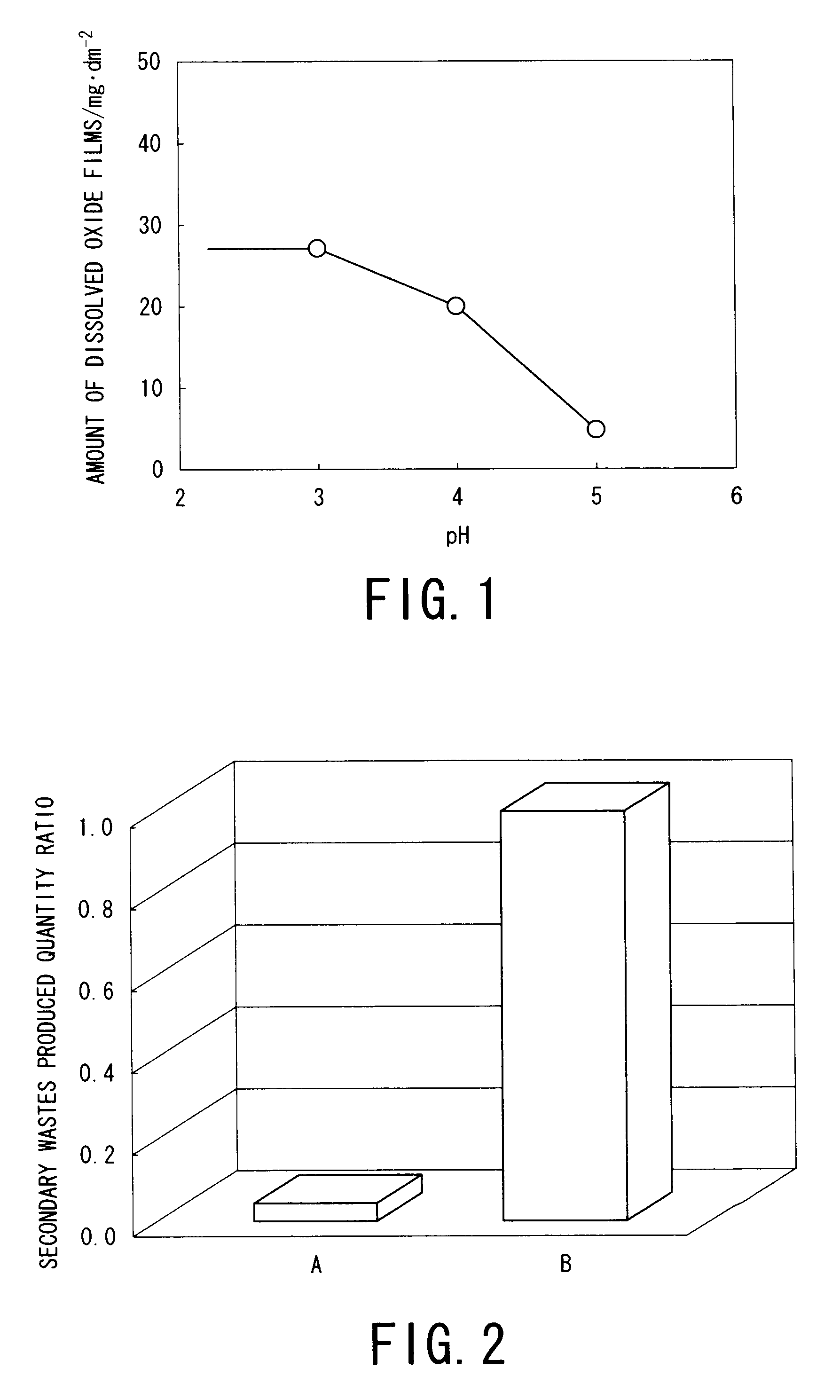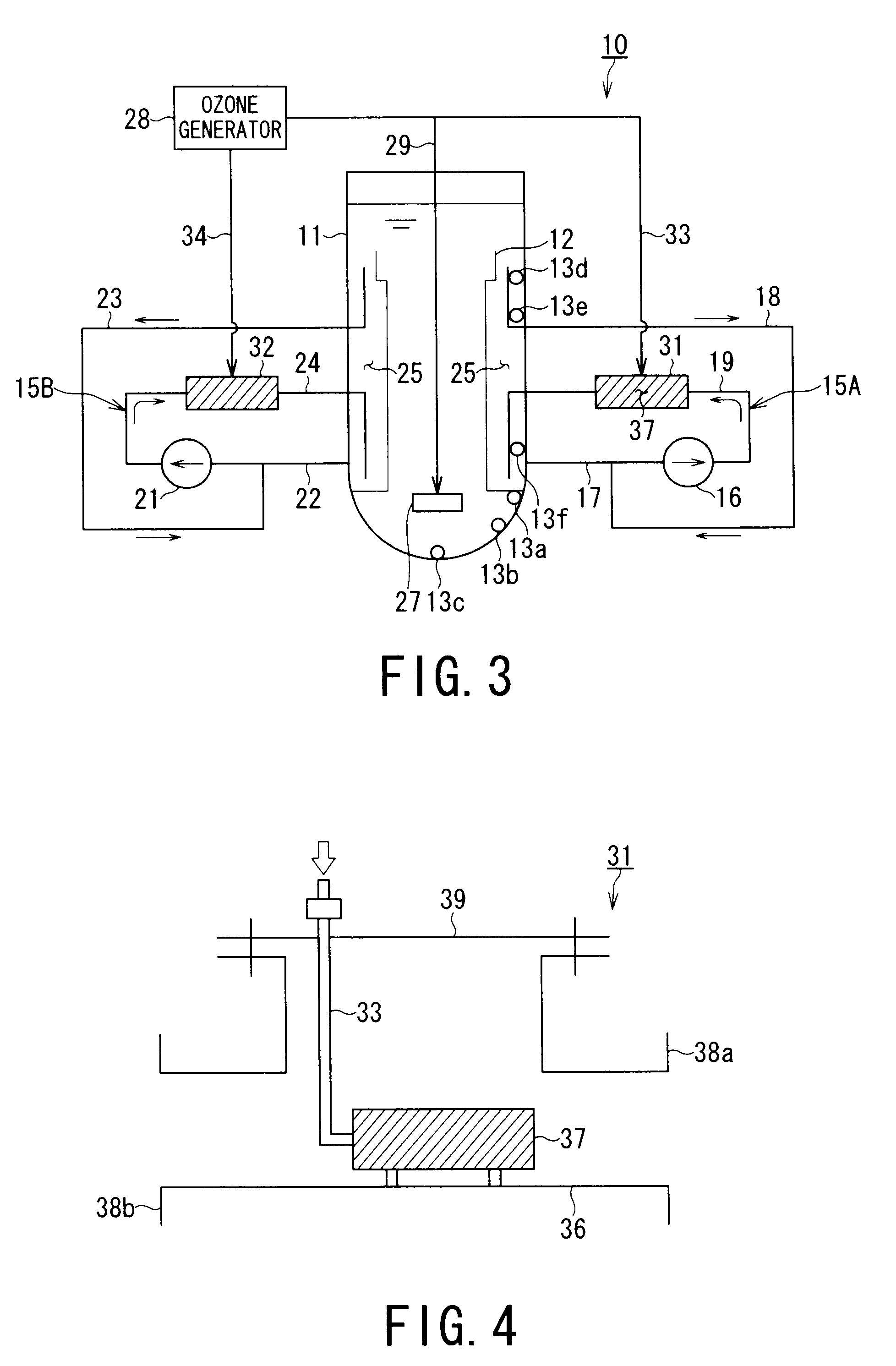Chemical decontamination apparatus and decontamination method therein
a chemical decontamination and decontamination apparatus technology, applied in lighting and heating apparatus, nuclear engineering, liquid cleaning, etc., can solve the problems of weak oxidizing power of ozone aqueous solution, small oxidation power, and inability to suppress the corrosion of the structural materials of the reactor by ozone water, so as to achieve efficient and effective suppression of corrosion of decontamination objects, enhanced decontamination performance, and enhanced cleaning
- Summary
- Abstract
- Description
- Claims
- Application Information
AI Technical Summary
Benefits of technology
Problems solved by technology
Method used
Image
Examples
first embodiment
[0079]A chemical decontamination method according to a first embodiment of the present invention is, for example, suitable for decontamination of the reactor structural materials and suppression of corrosion, for example.
[0080]In this decontamination method, a nickel-based alloy, for example, Inconel 182, was chosen as the reactor structural material. An Inconel test piece was immersed in ozone water to conduct test confirming whether corrosion occurred or not.
[0081]The size of the Inconel 182 test piece as the decontamination object was, for example, 30×10×2 mm3, and the immersion conditions of the test piece were as follows: dissolve ozone concentration in ozone water: 3 ppm, temperature: 80° C., immersion time 10 h.
[0082]The following test parameters were used to conduct the test for confirming whether corrosion of the Inconel test piece occurred or not:
[0083]i) no oxidation auxiliary agent or pH adjustor was added;
[0084]ii) 20 ppm of phosphoric acid was added as the oxidation au...
second embodiment
[0102]FIG. 3 is a schematic diagram showing a chemical decontamination apparatus according to a second embodiment of the present invention.
[0103]FIG. 3 shows a dissolved ozone detecting test system simulating BWR to which the chemical decontamination apparatus of the present invention is applied. A dissolved ozone detecting test system 10 includes a cylindrical tank 11 simulating a reactor pressure vessel, and a substantially cylindrical or sleeve-shaped internal structure 12 for controlling the water flow in the tank 11. The internal structure 12 simulates a core shroud. The capacity of the cylindrical tank 11 is, for example, 3.5 m3. In this example, the cylindrical tank 11 and the internal structure 12 correspond to the decontamination objects.
[0104]Sampling nozzles 13a to 13f for measuring the dissolved ozone concentration in water in the cylindrical tank 11 are installed at a plurality of places, e.g., six places, on the inner peripheral wall of the cylindrical tank 11. Water i...
third embodiment
[0134]FIG. 7 is a schematic diagram showing a chemical decontamination apparatus according to a third embodiment of the present invention.
[0135]This embodiment shows a chemical decontamination apparatus 51 that decontaminates a reactor pressure vessel 50 of a boiling water reactor (BWR) with ozone.
[0136]A reactor core 53 is disposed inside the reactor pressure vessel 50, and many fuel assemblies are supported by a core supporting plate 54 and an upper grid 55 inside the reactor core 53. Control rods (not shown) are charged in and discharged from the reactor core 53 by a control rod driving mechanism 56. FIG. 7 shows a state in which reactor equipments such as fuel assemblies, the control rods, a steam separator, a steam drier, and the like are removed.
[0137]The reactor core 53 is surrounded by a core shroud 57, and jet pumps 59 are disposed in a downcomer portion 58, which is an annular space between the core shroud 57 and the reactor pressure vessel 50. A plurality of jet pumps 59 ...
PUM
| Property | Measurement | Unit |
|---|---|---|
| pH | aaaaa | aaaaa |
| temperature | aaaaa | aaaaa |
| pH | aaaaa | aaaaa |
Abstract
Description
Claims
Application Information
 Login to View More
Login to View More - R&D
- Intellectual Property
- Life Sciences
- Materials
- Tech Scout
- Unparalleled Data Quality
- Higher Quality Content
- 60% Fewer Hallucinations
Browse by: Latest US Patents, China's latest patents, Technical Efficacy Thesaurus, Application Domain, Technology Topic, Popular Technical Reports.
© 2025 PatSnap. All rights reserved.Legal|Privacy policy|Modern Slavery Act Transparency Statement|Sitemap|About US| Contact US: help@patsnap.com



